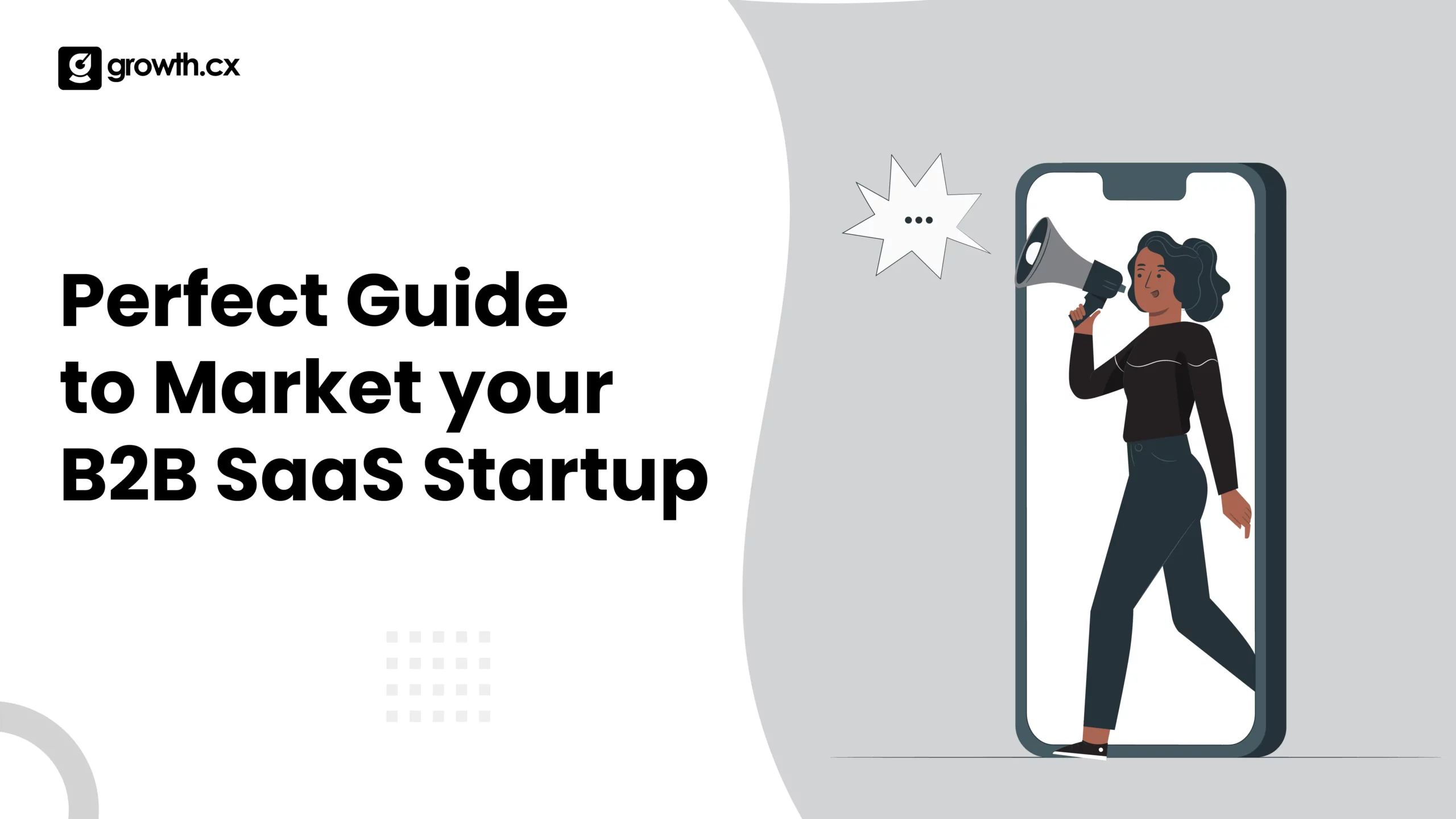You’re a startup, and you want to get the word out about your product or service. But where do you start?
With the global SaaS market zooming toward the $307 billion mark by 2026, there’s no denying the potential. But with such potential comes a challenge: How do you make your mark?
Now, here’s a little stat: 60% of companies revealed their biggest marketing hiccup is a sheer lack of time and resources. Sound familiar? You’re not alone in this. The journey of marketing a B2B SaaS startup is thrilling, filled with highs, lows, and everything in between.
The good news is that there are a lot of options when it comes to marketing your startup. The tricky part is figuring out which ones will work best for you.
It can be a little overwhelming, especially if you’re not familiar with all the different types of marketing. But don’t worry, we’re here to help.
In this article, we’ll go over the basics of how startups market their businesses. We’ll discuss the most popular methods and help you determine which ones are the best fit for you and your company.
The Challenges of Marketing a Startup
There are many challenges that come along with marketing a startup.
- For one, startups typically have a minimal budget when it comes to marketing and advertising. This can make it challenging to get the word out about your product or service in a competitive market.
Additionally, startups often have a small team and may not have the workforce to devote to an extensive marketing campaign.
- Another challenge is that you may be targeting a smaller audience compared to established brands. This can make it challenging to reach your target market and generate buzz for your product or service.
Moreover, customers may be hesitant to try new products or services from startups, so you’ll need to work hard to build trust and credibility.
- Finally, keep in mind that it takes time for any marketing campaign to yield results. Be patient, and don’t expect immediate ROI from your marketing efforts.
If you stay focused and consistent, you’ll eventually start to see results from your marketing campaigns.
Market Research Definitely Helps
There are a lot of ways to market a startup, and it can be difficult to know where to start. Many startups don’t have the budget for a full-time marketing team, so it’s important to focus on the most effective marketing channels. One of the most important things any startup can do is market research.
Market research helps you understand your target audience, what they want, and how they make purchase decisions. It also enables you to understand your competition and what they’re doing to reach their target audiences. Without this information, it’s hard to create an effective marketing strategy.
There are many different types of market research, but some of the most common are surveys, interviews, focus groups, and secondary research.
- Surveys are a great way to collect quantitative data from a large group of people.
- Interviews and focus groups are good for collecting qualitative data from a smaller group of people.
- And secondary research is good for understanding industry trends.
No matter what type of market research you do, it will be helpful in creating an effective marketing strategy for your startup.
Create an Effective Marketing Plan for Your Startup
There is no one-size-fits-all answer to this question, as the marketing plan for your startup will vary depending on your budget, target market, and desired outcomes. However, there are some key elements that all successful marketing plans should include:
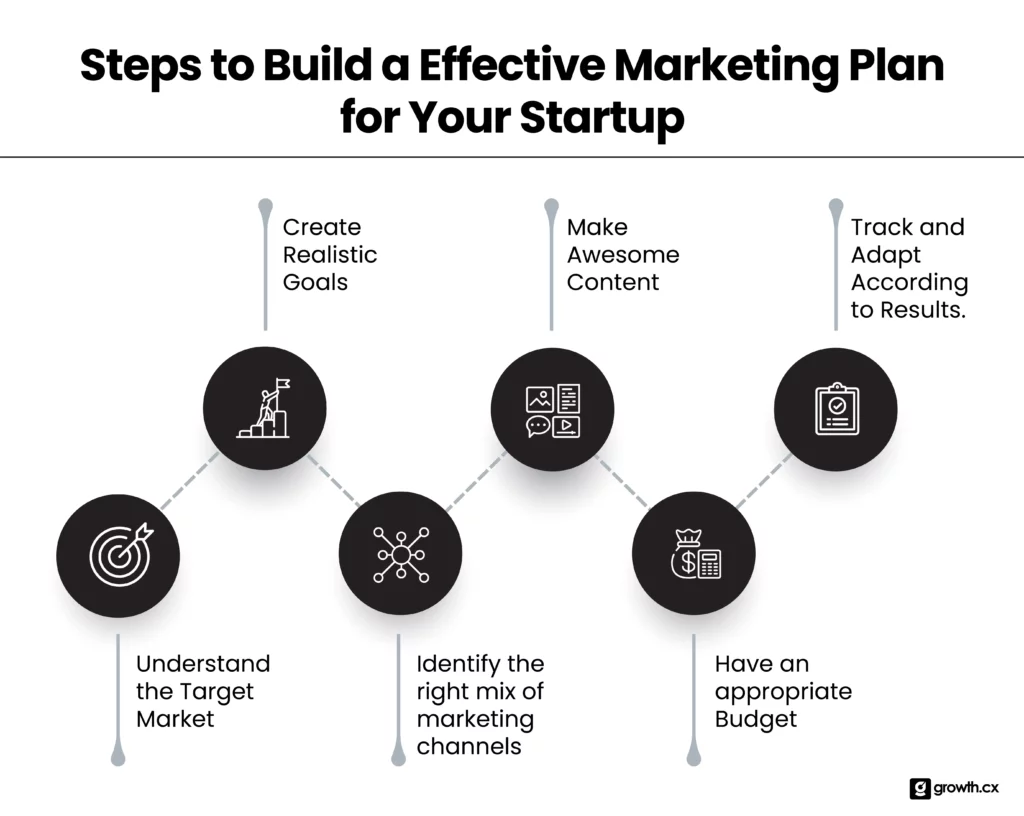
1. Define your target market.
Who are you trying to reach with your marketing efforts? Knowing your target market is essential in order to create an effective marketing plan. Without this information, you’ll be shooting in the dark and wasting valuable resources.
2. Set realistic goals.
What do you hope to achieve with your marketing plan? Be specific and measurable in setting your goals, so you can track your progress and adjust your strategy as needed.
3. Choose the right mix of marketing channels.
There are many different ways to market a startup, so it’s important to choose the channels that will work best for reaching your target audience. Consider paid advertising, social media, PR, content marketing, and other options.
4. Create compelling content.
Your marketing materials should be clear, concise, and persuasive in order to capture attention and motivate people to take action. Make sure your website, landing pages, blog posts, and other content are up to par before launching any campaigns.
5. Budget appropriately.
You don’t need to break the bank to create a successful marketing plan, but you do need to allocate enough resources to reach your goals. Make sure you have a realistic budget in place before getting started.
6. Track, measure, and adjust.
As with any business venture, it’s important to track your progress and adjust your marketing plan accordingly. Use analytics tools to measure your results and identify areas for improvement.
By following these tips, you can create an effective marketing plan that will help you achieve your startup’s goals.
Traditional vs Digital Marketing for Startups
There are a lot of decisions that go into launching a startup, and marketing is one of the most important. The key question is: how do startups market?
There are two main ways to approach marketing for a startup: traditional marketing and digital marketing. Traditional marketing includes things like print ads, TV commercials, and radio spots. Digital marketing, on the other hand, encompasses all online activity, from social media to search engine optimization (SEO).
So which is the better option for startups? The answer may surprise you: it depends. Each approach has its advantages and disadvantages, which we’ll explore in more detail below.
| Traditional Marketing | Digital Marketing | ||
| Pros: | Cons: | Pros: | Cons: |
| Establishes your brand identity | Expensive | Inexpensive | Requires technical skills |
| Builds trust with potential customers | Time-consuming | Quick to set up and implement | Can be overwhelming |
| Can reach a wide audience | Requires sustained effort | Target specific audiences and measure results | Global competition |
| Physical engagement can create a strong impact | Limited interaction with the audience | It allows immediate feedback and engagement | Digital content can overwhelm and fatigue users |
| Traditional formats can be more useful and appropriate. | Less flexible, changes are costly and time-consuming. | Highly adaptable, can quickly respond to market trends and feedback. | You need to update strategies regularly to keep up with digital trends. |
Growth Marketing in B2B SaaS
The Shift from Traditional Marketing to Growth Marketing
- Traditional Marketing: Remember when marketing was about TV commercials, print ads, and billboards? Ah, good times. But here’s the thing:
- It was expensive.
- It was hard to measure.
- And it wasn’t always effective for niche markets like B2B SaaS.
- Growth Marketing: Enter the era of growth marketing. So, what’s the buzz all about?
- It’s data-driven. It’s agile. Changes can be made on the flyIt focuses on the entire funnel, from acquisition to retention.
But wait, there’s more! Ever heard of growth hacking? No? Well, buckle up!
Understanding Growth Hacking and Its Significance in SaaS Marketing Growth hacking might sound like some techy jargon, but it’s simpler than you think. It’s all about:
- Using innovative, low-cost strategies to grow your business.
- Being experimental. Test, learn, iterate.
- Leveraging technology, analytics, and creativity.
You might wonder, “Why is it so crucial for SaaS marketing?” Here’s the deal:
- SaaS products often have viral components built in. Think about features like collaborative tools or referral bonuses.
- The SaaS market is crowded. Standing out requires thinking outside the box.
- With monthly or yearly subscriptions, retaining customers is as important as acquiring them. Growth hacking focuses on both!
And speaking of growth hacking…
Examples of Successful Growth Hacking Strategies
- Slack
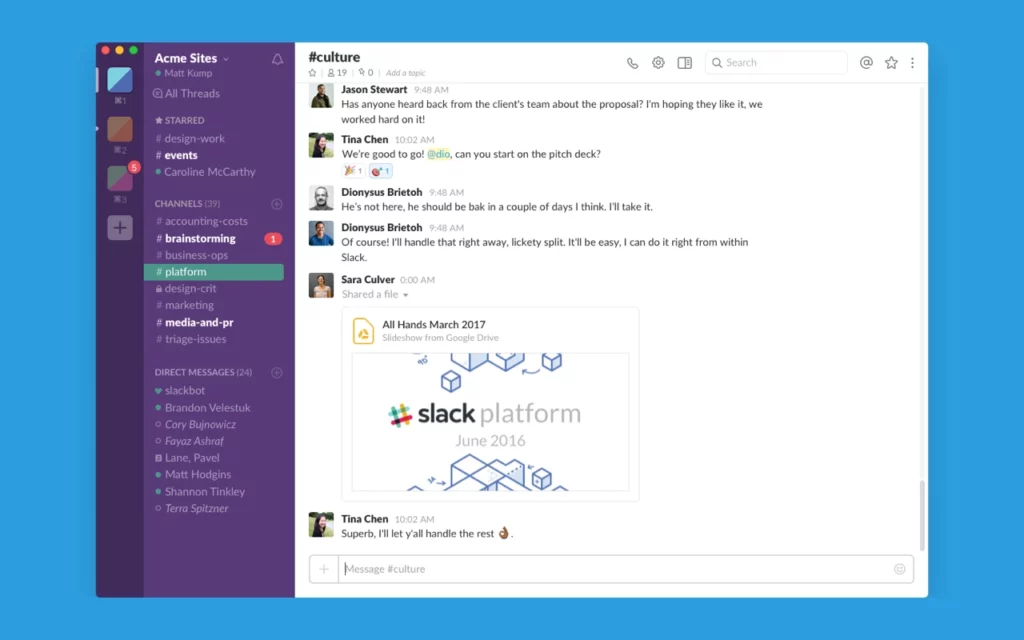
Did you know Slack initially grew through word-of-mouth? They focused on creating an exceptional user experience, which led to users naturally raving about it. Plus, their integrations with other tools made them indispensable.
- Dropbox
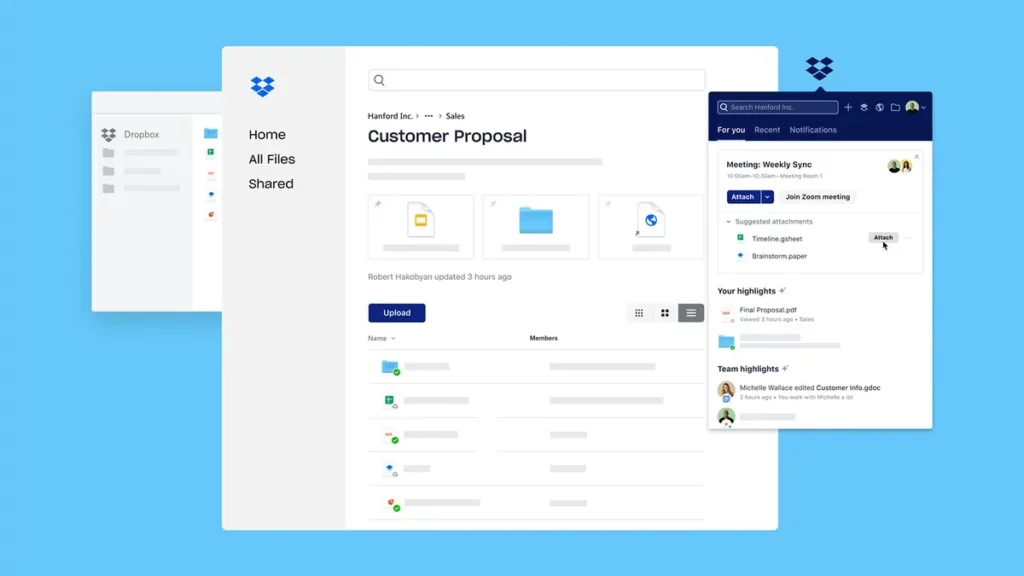
Ah, the classic example! Dropbox offered additional free storage space for users who referred their friends. Simple, right? But oh-so-effective. This strategy skyrocketed their user base without spending big bucks on advertising.
So, there you have it! From the shift to growth marketing to the magic of growth hacking, the world of B2B SaaS marketing is evolving and thrilling.
Realize the Power of Content Marketing
In order to be successful, startups need to focus on creating and distributing valuable, relevant, and consistent content. Content marketing is a powerful tool that can help startups reach their target audiences and achieve their business goals.
When done right, content marketing can help startups build brand awareness, generate leads, and drive sales. It is an essential part of any comprehensive marketing strategy.
Suggested Read: Content Marketing Services: Your Key to Business Success
These are the five critical elements of a successful B2B SAAS content strategy. You will get the best outcomes from your content marketing strategy.
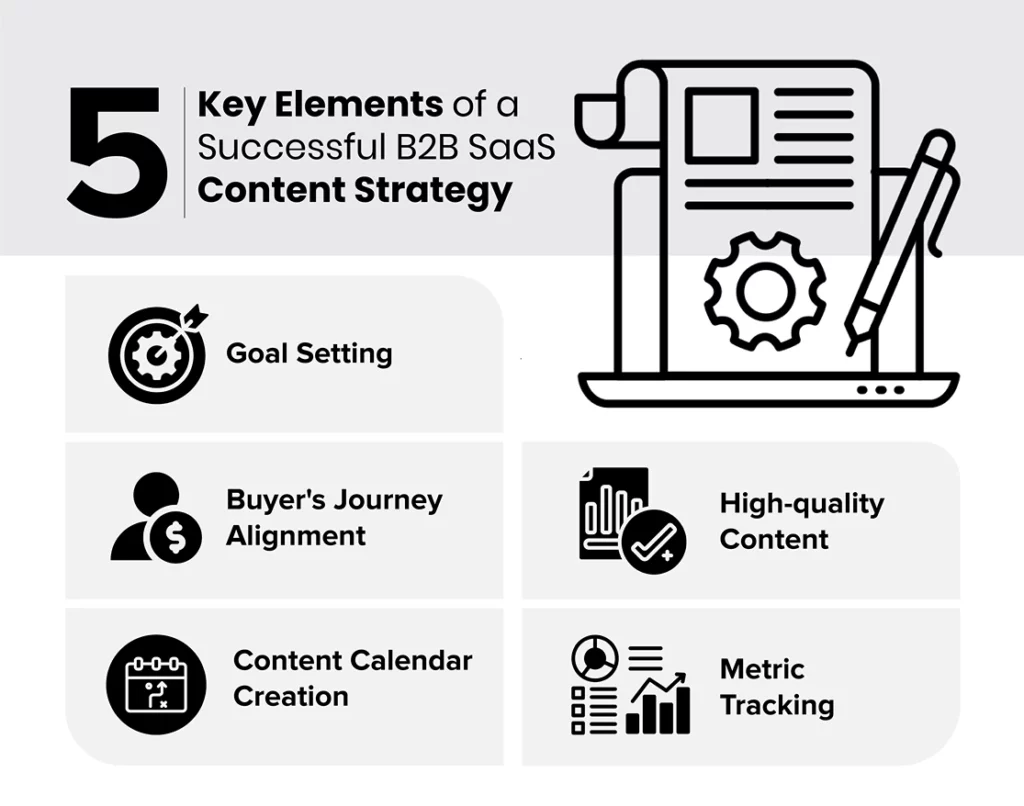
1. Goal Setting
You have to set up a clear destination for your content marketing strategy. This means you have set precise, measurable goals in your content strategy. Your content marketing goals should match your overall business objectives so that you can get the best results.
Use the SMART method here: specific, measurable, achievable, relevant, and time-bound. When you follow this way, you can get a complete benchmark against which to measure success.
2. Buyers Journey Alignment
Next, you have to understand your audience and which is the most effective content marketing strategy. In B2B SaaS, you must watch for your buyer’s journey, including awareness, consideration, and decision stages.
And build your content that matches these stages with informative and engaging material. It helps address your potential customers’ needs and pain points at the right time.
3. Content Calendar Creation
You must develop a well-planned content calendar like a roadmap to your content strategy. It helps you organize themes, topics, and publishing schedules that ensure a balance in your deliverables.
This calendar should be adaptable to industry trends and audience feedback. You can regularly update and maintain your content calendar and keep your content strategy focused on track.
4. High-quality Content
Write high-quality content because it’s the core of any content marketing strategy. You can make high-quality content that is informative, engaging, and tailored to your audience.
Ensure it is valuable in blog posts, whitepapers, or compelling case studies. Content must resonate with your audience and reinforce your brand authority, which is more valuable than a high volume of generic posts.
5. Metric Tracking
Track down your metrics for an effective content strategy. These include website traffic, lead generation, engagement rates, and conversion metrics. Analyzing these metrics provides insights into what is working and what is not.
It allows you to refine and optimize your strategy for better results. Regularly checking your performance against your initial goals helps ensure your content marketing strategy aligns with your business objectives.
Creating quality content takes time and effort, but it is well worth it. Startups that invest in content marketing will be able to connect with their customers, build trust, and establish themselves as thought leaders in their industries.
Read on to find out top content marketing agencies for SaaS businesses
The Power of a Strong Brand
Have you ever wondered why some SaaS companies just seem to stick in your mind? Let’s unravel that mystery.
Building Trust and Credibility in a Saturated Market:
- Picture this: You’re scrolling through your feed, and amidst a sea of ads, one company keeps popping up with valuable content, consistent messaging, and a sleek design. Over time, you start recognizing them, right? That’s the power of branding.
- Consistency is Key: A consistent brand image across all platforms builds familiarity. And guess what? Familiarity breeds trust.
- Stand Out or Fade Out: In a market flooded with SaaS startups, a strong brand helps you stand tall and get noticed.
But here’s the kicker…
The Role of Branding in Reducing Customer Acquisition Costs:
- Think about it: When people already know and trust your brand, do you need to spend as much convincing them to try your product? Probably not.
- Word-of-mouth: A strong brand gets people talking. And when they talk, you save on advertising costs.
- Higher Conversion Rates: Recognizable brands often see higher conversion rates. Why? Because trust has already been established.
And if you’re still not convinced…
How Branding Can Lead to Better Customer Retention:
- It’s not just about getting new customers; it’s about keeping them. And a memorable brand plays a huge role in that.
- Emotional Connection: Brands that resonate with users on an emotional level have a higher chance of retaining them. It’s all about creating that bond.
- Beyond the Product: Customers don’t just buy a product; they buy into a brand. If they believe in your stand, they’re likelier to stick around.
So, in a nutshell? Branding isn’t just about a fancy logo or a catchy tagline. It’s about creating an identity, building trust, and forging lasting connections.
Create A Unique Selling Proposition For Your Startup
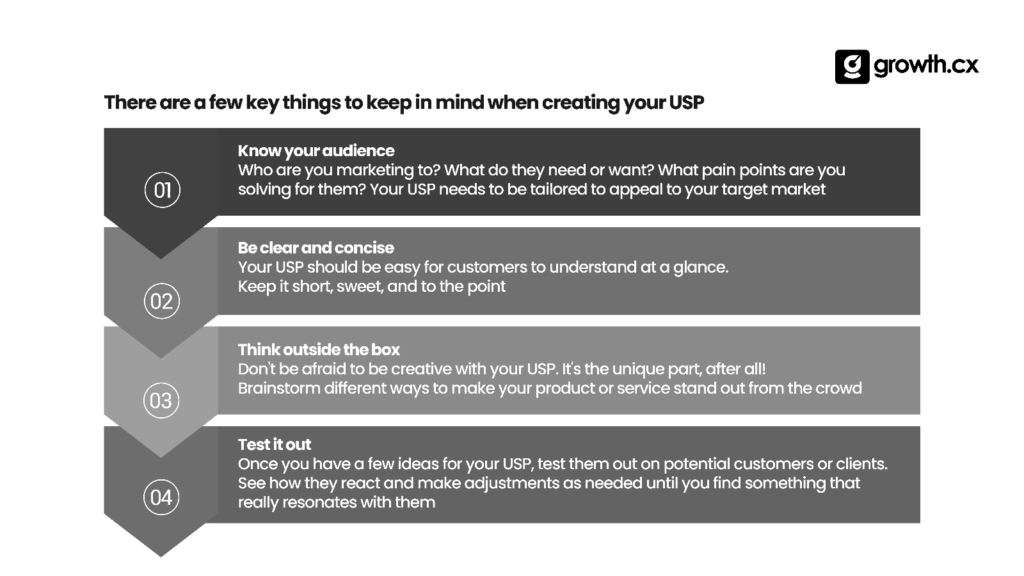
Creating a unique selling proposition (USP) is one of the most important steps for any startup. Your USP makes your product or service different from all the others on the market.
It’s what sets you apart and gives customers a reason to choose you over your competitors.
There are a few key things to keep in mind when creating your USP:
1. Know your audience. Who are you marketing to? What do they need or want? What pain points are you solving for them? Your USP needs to be tailored to appeal to your target market.
2. Be clear and concise. Your USP should be easy for customers to understand at a glance. Keep it short, sweet, and to the point.
3. Think outside the box. Don’t be afraid to be creative with your USP. It’s the unique part, after all! Brainstorm different ways to make your product or service stand out from the crowd.
4. Test it out. Once you have a few ideas for your USP, test them out on potential customers or clients. See how they react and make adjustments as needed until you find something that really resonates with them.
Putting together a strong USP is an essential part of any good marketing strategy. By taking the time to create a well-crafted one, you’ll give yourself a major advantage over your competition.
What to do if your on a Shoestring Budget
Starting a business is hard enough, but marketing a startup on a shoestring budget can feel impossible.
There are so many things to consider when it comes to marketing – from your target audience to your brand identity to your messaging – and it can be tough to know where to start.
Luckily, there are some tried-and-true methods for marketing a startup on a tight budget. Here are a few tips:
1. Keep It Simple
When you’re first starting, it’s important to keep your marketing efforts focused and streamlined. Trying to do too much at once will only end up costing you more in the long run, so it’s better to focus on a few key channels and do them well.
2. Get Creative With Your Content
One of the most important aspects of any marketing campaign is the content you create. And while high-quality content can be expensive to produce, there are ways to get around that if you’re on a tight budget.
For example, you can repurpose existing content, use user-generated content, or leverage free resources like Canva or Unsplash for visuals.
3. Focus on SEO
Search engine optimization should be one of your top priorities when marketing a startup on a shoestring budget. Why? Because SEO will help you get found online by potential customers who are already interested in what you have to offer.
And the best part is that there are plenty of free resources out there to help you get started, like Google’s Keyword Planner and Moz’s Beginner’s Guide to SEO.
4. Utilize Social Media
Social media is one of the most cost-effective marketing channels available, so it’s a great option for startups on a shoestring budget.
Not only is it free to create accounts on most platforms, but you can also use social media to drive traffic to your website, generate leads, and build relationships with potential customers.
5. Get Press Coverage
Getting press coverage can be a great way to raise awareness for your startup without spending a lot of money. And while it can be tough to get noticed by reporters and journalists, there are some things you can do to increase your chances, like using HARO or sending out personalized pitches.
The Do’s and Don’ts of Marketing Your B2B SaaS Startup
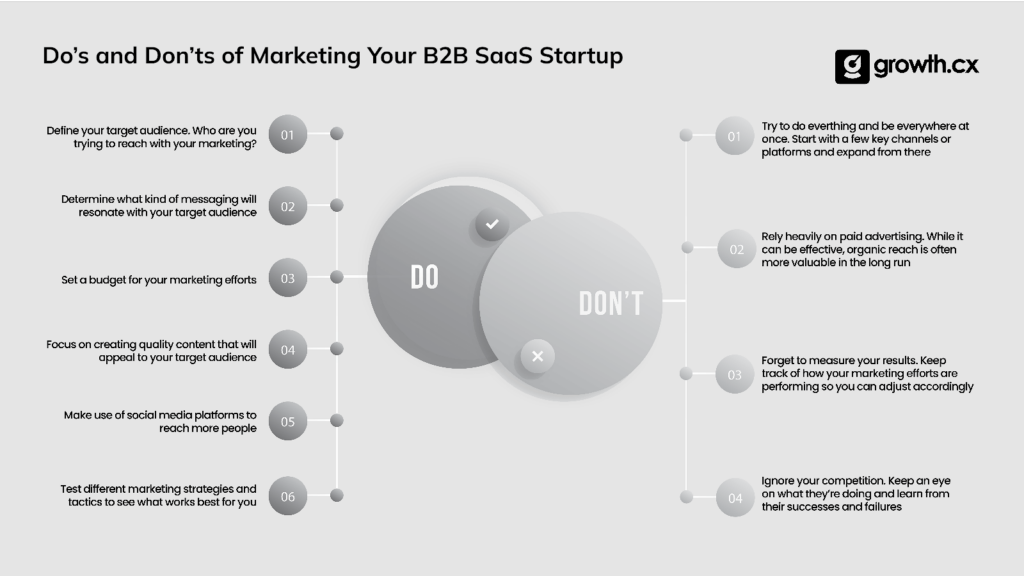
There are a lot of things to keep in mind when you’re marketing your startup. You want to make sure you’re doing everything you can to reach your target audience and get your name out there, but you also don’t want to overspend or stretch yourself too thin.
To help you navigate the world of startup marketing, we’ve put together a list of dos and don’ts for you to follow.
Do:
- Define your target audience. Who are you trying to reach with your marketing?
- Determine what kind of messaging will resonate with your target audience.
- Set a budget for your marketing efforts.
- Focus on creating quality content that will appeal to your target audience.
- Make use of social media platforms to reach more people.
- Test different marketing strategies and tactics to see what works best for you.
Don’t:
- Try to do everything and be everywhere at once. Start with a few key channels or platforms and expand from there.
- Rely heavily on paid advertising. While it can be effective, organic reach is often more valuable in the long run.
- Forget to measure your results. Keep track of how your marketing efforts are performing so you can adjust accordingly.
- Ignore your competition. Keep an eye on what they’re doing and learn from their successes and failures.
Bottomline
So you’ve got a startup. Congratulations! But now comes the hard part: how do you market it?
This is where growth.cx comes in. We’re a community of highly passionate and super-qualified Growth Hackers, Digital Marketers, Content Creators, Developers and Designers.
We help businesses by connecting them with qualified organic leads by creating quality content. We also provide a host of services, including SEO, SEM, PPC, and branding services.
If you’re looking for quality marketing services that will take your startup to the next level, then look no further than growth.cx.
We offer free consultations to discuss your unique needs and how we can growth hack your business. We also offer a free consultation to discuss your specific needs and how we can help you grow your business. Contact us today to learn more about why growth.cx is the right choice for your startup marketing needs.
